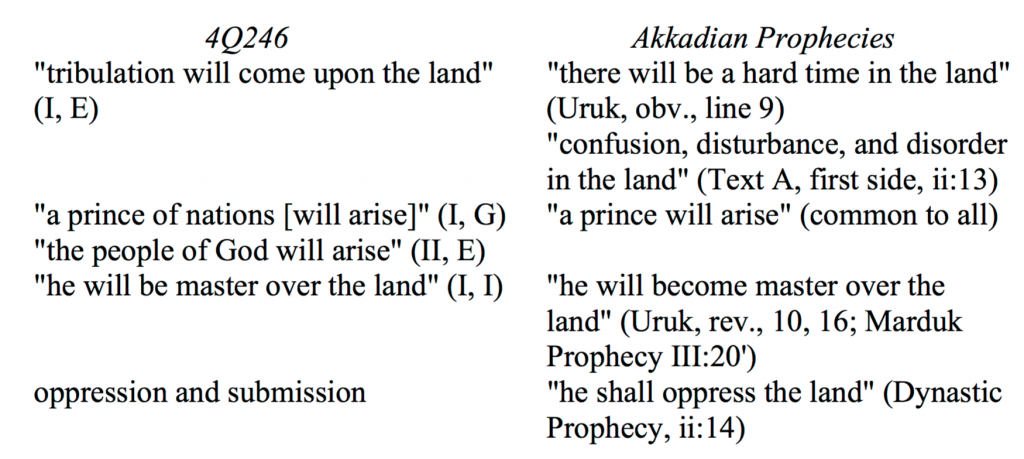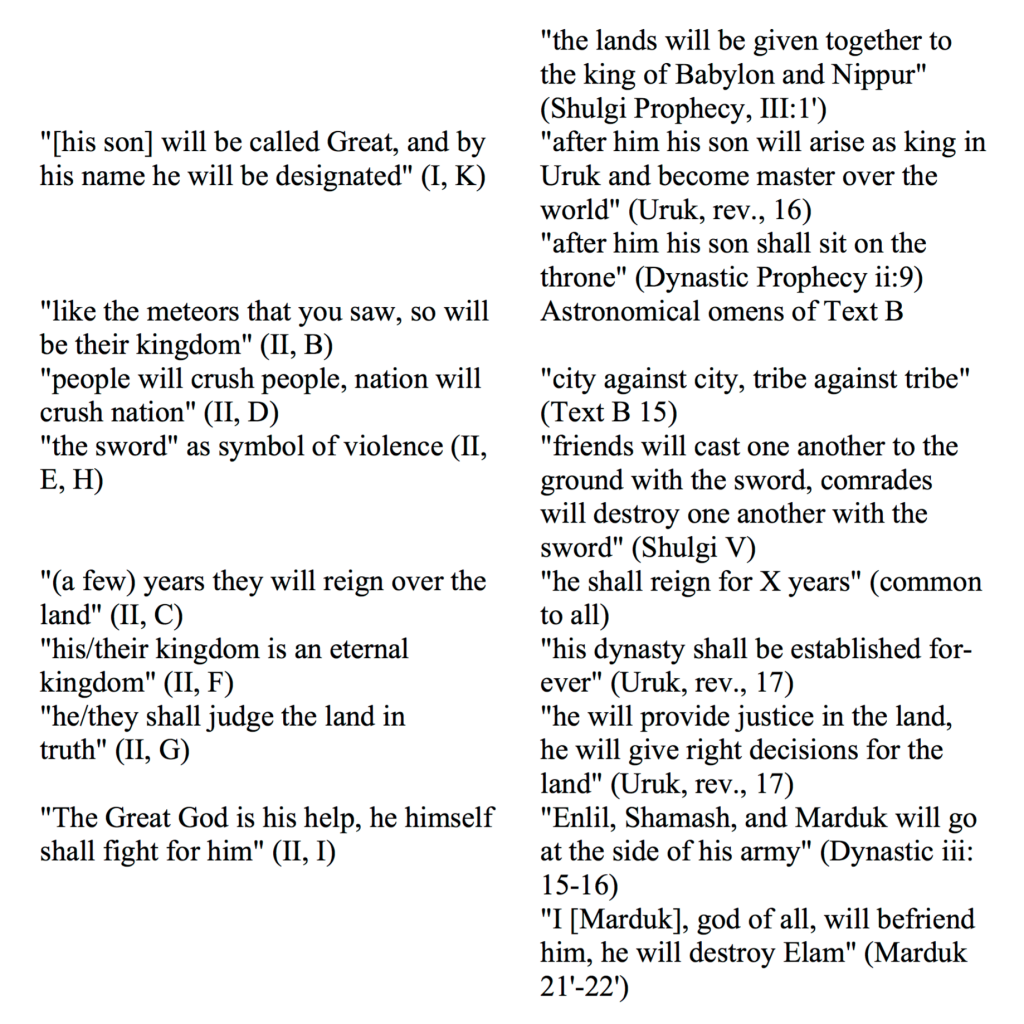What is the Apocryphon of Daniel (4Q246)?
The Apocryphon of Daniel is a textual fragment that was found in cave #4 of the Dead Sea (or Judean desert) caves. It is commonly referred to as the “Son of God document”, “Aramaic Apocalypse”, or “Pseudo-Daniel.” It was written in Aramaic and is believed to have been written around the first century BCE.
It was first purchased by researchers in 1958 from Beduins who discovered the caves. It was published for the first time in 1972.
It’s been compared to the Prophecy of Daniel and even Akkadian apocalyptical texts. This comparison can be seen below. However, so many of the ancient apocalypses follow the same pattern, thus it would be difficult to pair it up with anything too specific, especially considering that we only have a fragment.
What’s in the Apocryphon of Daniel?
 There are just a few short lines on this fragment but what is there really paints a classic messianic apocalypse prophecy. It follows very similar pattern to other end-times prophecies where a messiah comes with military might and sets up a dominant kingdom after defeating all of his enemies.
There are just a few short lines on this fragment but what is there really paints a classic messianic apocalypse prophecy. It follows very similar pattern to other end-times prophecies where a messiah comes with military might and sets up a dominant kingdom after defeating all of his enemies.
The positioning of the text is written in a way to make one think that the prophecy is written by the OT biblical written, Daniel. However, the dating of the fragment and the language would make that a difficult thing to prove if ever attempted. Despite the technical aspect, the language and imagery will remind the reader of Daniel. Concepts such as the Son of God is shared between the two, as well as the idea that the messiah will crush all of God’s enemies.
The background information has lead many to suggest that the text was designed to address the issues of the Seleucid period, where Jews were oppressed and demeaned by Antiochus IV Epiphanies.
Translation of the Apocryphon of Daniel
The fragment has two columns but only the one on the left contains complete sentences. The damage the right column cuts right through the text.
Column I (right) translation
- [ ] rested upon him, he fell befor the throne
- [… k]ing, rage is coming to the world, and your years
- […]. . . your vision, all of it is about to come unto the world.
- [… mi]ghty [signs], distress is coming uopn the land
- […] great slaughter in the provinces
- […] king of Assyria [ and E]gypt
- […] he will rule over the land
- […] will do and all will serve
- [… gr]eat will be called and he will be designated by his name.
Column II (left) translation
- “He will be called the Son of God, and they will call him the son of the Most High. Like the sparks
- that you saw, so will their kingdom be; they will rule several year[s] over
- the earth and crush everything; a people will crush another people, and a province another provi[n]ce
- Until the people of God arises and makes everyone rest from the sword.
- His kingdom will be an eternal kingdom, and all His paths in truth. He will jud[ge]
- the earth in truth and all will make peace. The sword will cease from the earth,
- and all the provinces will pay homage. The great God is his strength,
- He will wage war for him, he will place the peoples in his hand and
- Cast them all away before him. His rule will be an eternal rule and all the abysses”
Comparison with Akkadian Apocalypses
Comparison layout done by Edward M. Cook
References used
Aramaic Apocryphon of Daniel, By Eibert Tigchelaar
Cook, Edward: COMPREHENSIVE ARAMAIC LEXICON HEBREW UNION COLLEGE CINCINNATI, OHIO
Fitzmyer, Joseph: 4Q246: The “Son of God” Document from Qumran
Kim, Jin Yang: 4Q246 4QAramaic Apocalypse


